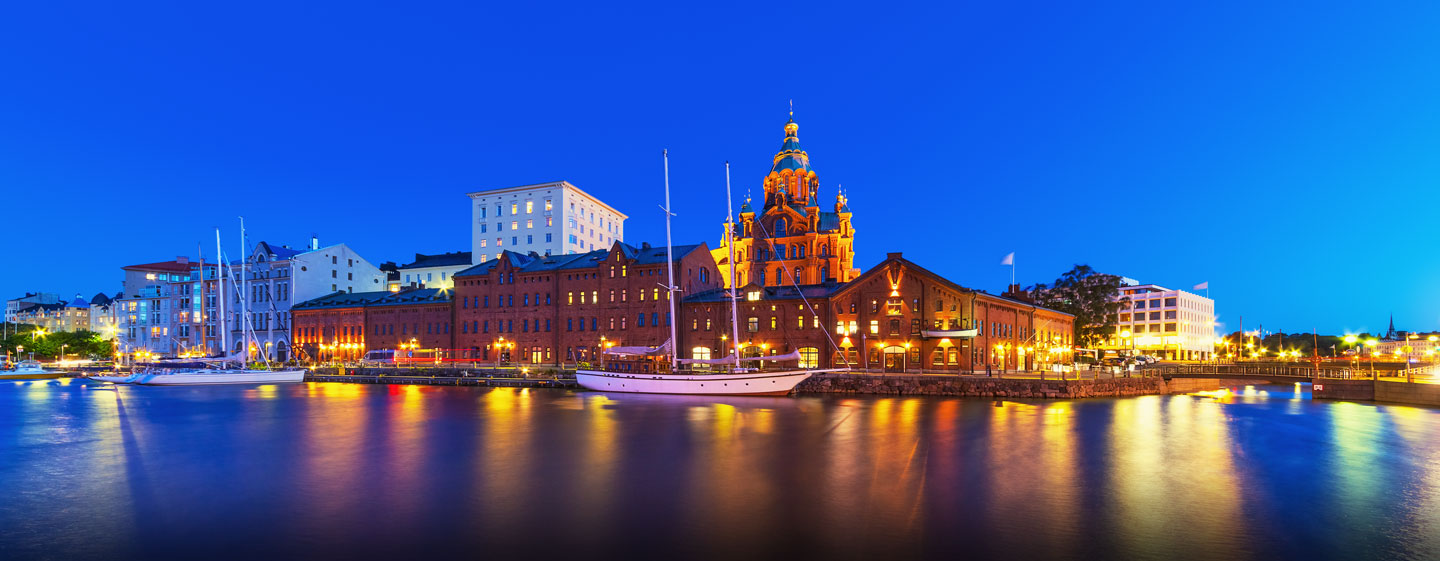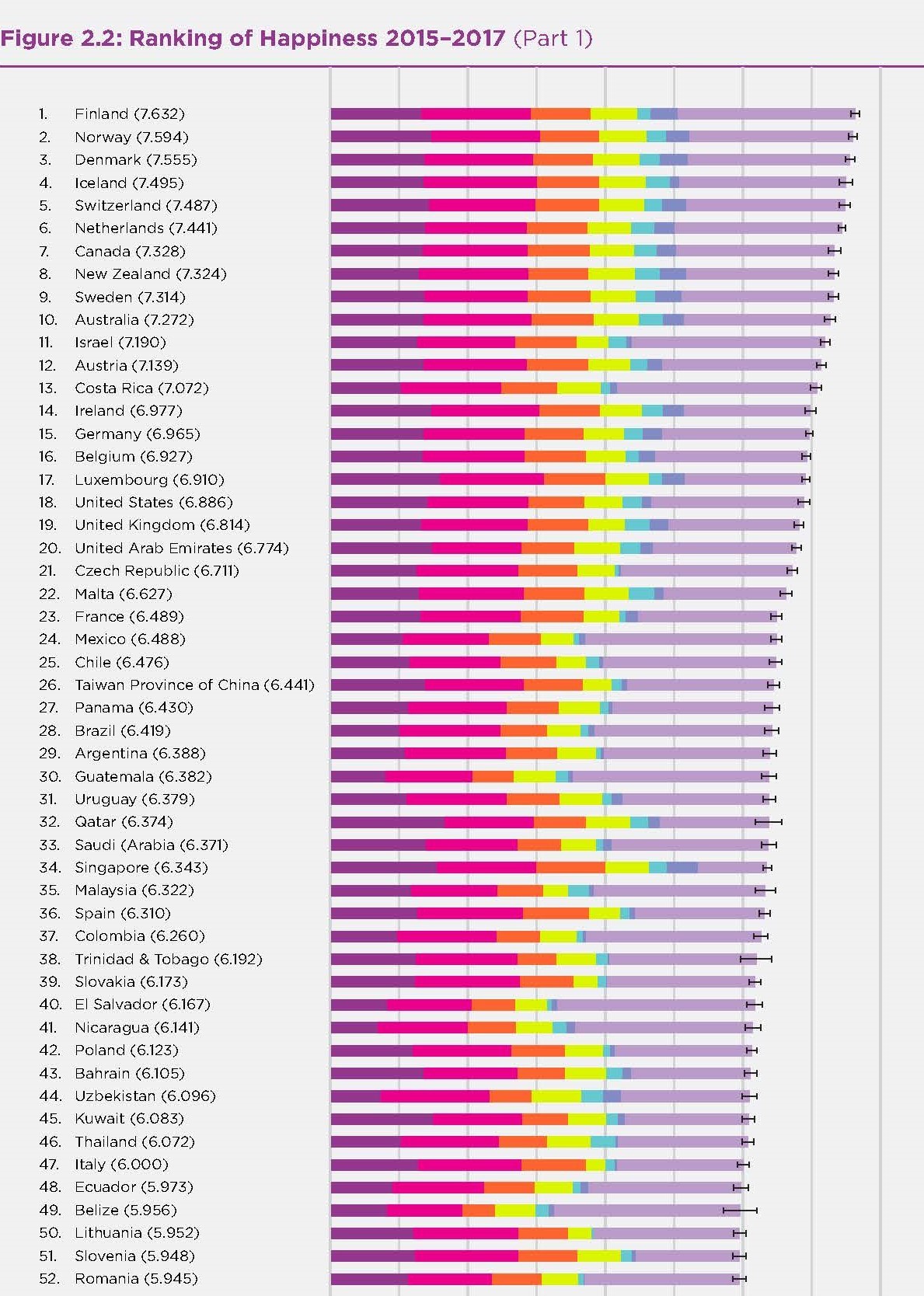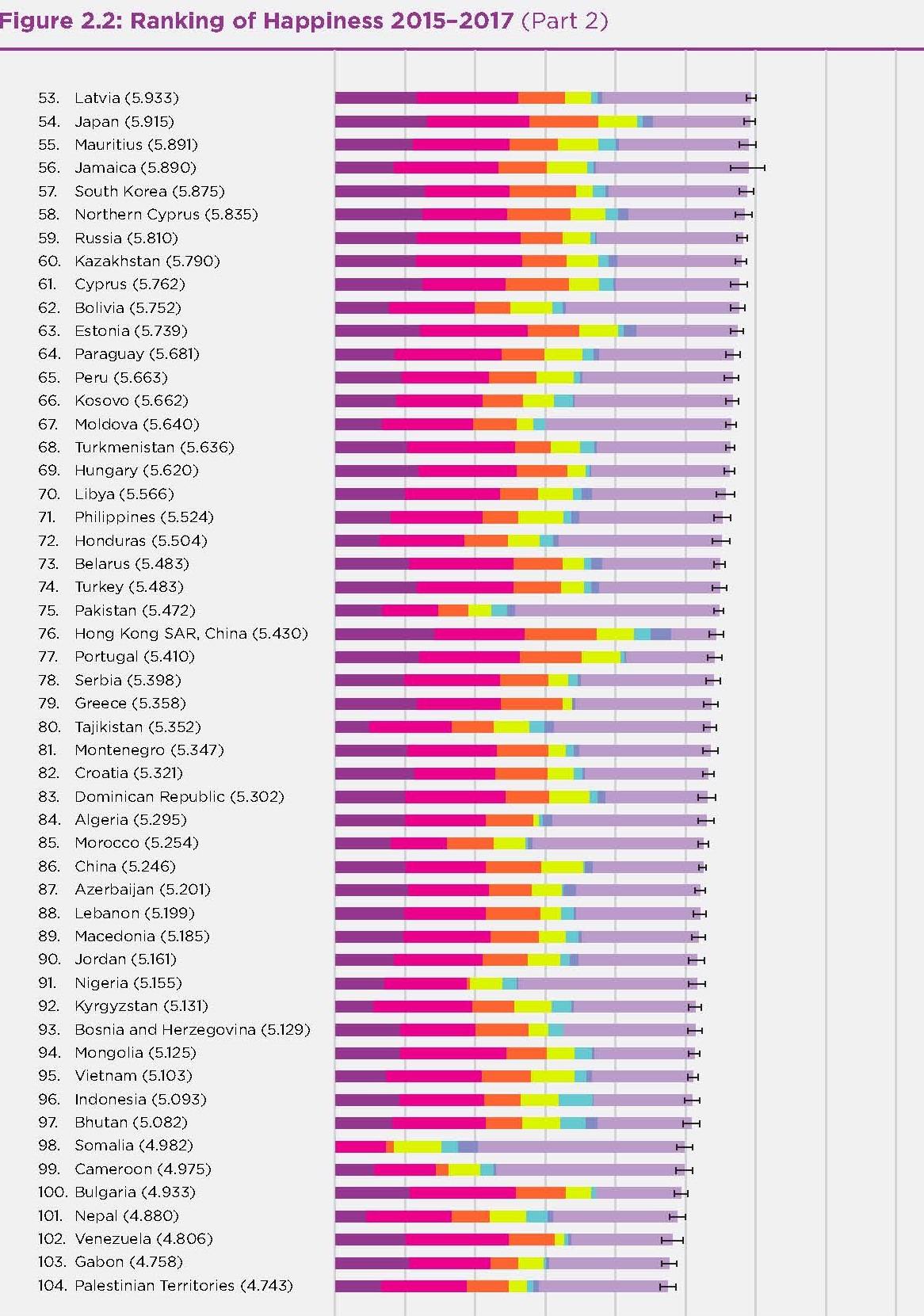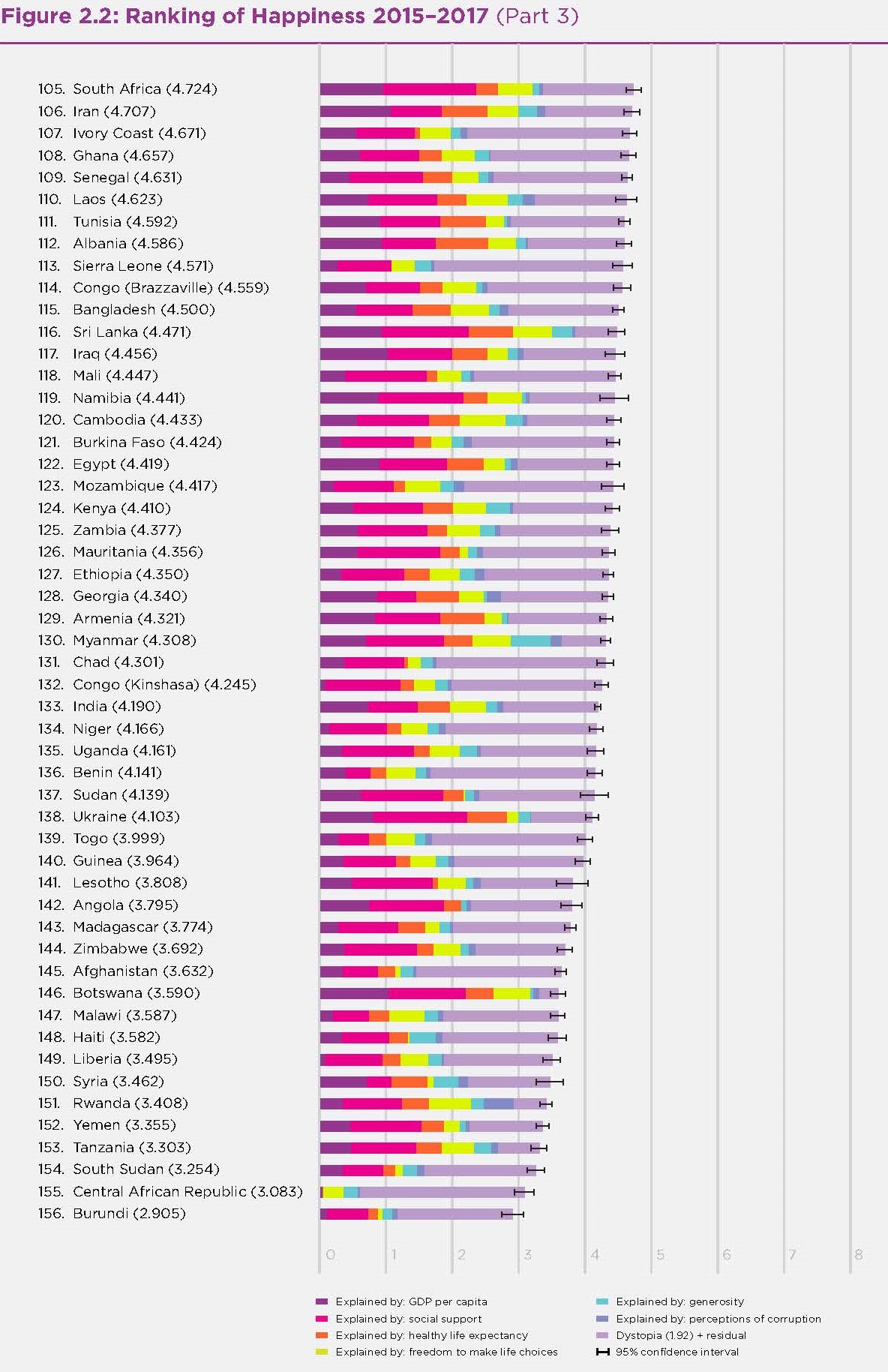
World Happiness Report 2018
The World Happiness Report is a landmark survey of the state of global happiness. The World Happiness Report 2018, which ranks 156 countries by their happiness levels, and 117 countries by the happiness of their immigrants.
Finland Wins Double Gold in World Happiness Report 2018
- Capital: Helsinki
- Population: 5.495 million (2016)
- Capital and largest city: Helsinki;
ROME, March 14 – This year Finland takes the top spot as the happiest country as measured by surveys undertaken by Gallup International from 2015-2017. Rounding out the rest of the top ten in order of overall happiness are Norway, Denmark, Iceland, Switzerland, Netherlands, Canada, New Zealand, Sweden, and Australia. The U.S. ranked 18th, dropping down four spots from last year. In addition, Finland’s immigrants are also the happiest immigrant population in the world, based on the available data from 117 countries.
“Governments are increasingly using indicators of happiness to inform their policy-making decisions,” notes co-editor Jeffrey D. Sachs. “U.S. policymakers should take note. The U.S. happiness ranking is falling, in part because of the ongoing epidemics of obesity, substance abuse, and untreated depression.”
The World Happiness Report 2018, which ranks 156 countries by their happiness levels, and 117 countries by the happiness of their immigrants, was released today at a launch event at the Pontifical Academy of Sciences in the Vatican. A subsequent event will occur next week on March 20th, celebrating World Happiness Day at the United Nations.
This report also considers the happiness of immigrants. The report includes four chapters on migration, both internal (within-country) and international (cross-country), investigating the happiness of migrants, their families left behind, and others living in the cities and countries receiving migrants.
“The most striking finding of the report is the remarkable consistency between the happiness of immigrants and the locally born,” said co-editor Professor John Helliwell of the University of British Columbia. All of the top ten countries for overall happiness 2015-2017 are in the top 11 countries for immigrant happiness based on surveys covering 2005-2015. “Although immigrants come from countries with very different levels of happiness, their reported life evaluations converge towards those of other residents in their new countries,” said Helliwell. “Those who move to happier countries gain, while those who move to less happy countries lose,” though the adjustment of happiness is not complete, as migrants still reflect in part the happiness of their birth country.
The report, produced by the United Nations Sustainable Development Solutions Network (SDSN) with the support of the Ernesto Illy Foundation, is edited by Professor John F. Helliwell of the University of British Columbia and the Canadian Institute for Advanced Research; Professor Richard Layard, co-director of the Well-Being Programme at LSE’s Centre for Economic Performance; and Professor Sachs, director of SDSN. Policy applications of happiness research are collected in a companion SDSN publication Global Happiness Policy Report 2018.
The World Happiness Report 2018 includes the following chapters:
- Happiness and Migration: An Overview, by John Helliwell, Richard Layard and Jeffrey Sachs
- International Migration and World Happiness, by John Helliwell, Haifang Huang, Shun Wang and Hugh Shiplett
- Do International Migrants Increase their Happiness and that of their Families, by Migrating? by Martijn Hendricks, Martijn Burger, Julie Ray and Neli Esipova
- Migration and Happiness in China, by John Knight and Ramani Gunatilaka
- Happiness and International Migration in Latin America, by Carol Graham and Milena Nikolova
- Happiness in Latin America has Social Foundations, by Mariano Rojas
- America’s Health Crisis and the Easterlin Paradox, by Jeffrey Sachs
“Coffee is quite literally the beverage of happiness, something remarkably simple yet complex that brings so much pleasure to so many every day, while creating development in producing countries with every cup. So the idea of supporting a project like The World Happiness Report, and the brilliant work of Professor Sachs and his team, is only natural for illy,” said Andrea Illy, Chairman of illycaffè and Member of the Board of Fondazione Ernesto Illy. “This year’s focus on happiness throughout Latin America means a great deal to us. Two-thirds of our coffee is purchased directly from farmers in Latin American countries, who receive a large premium over market prices for meeting our high quality standards, and whom we educate to help them achieve that quality. This model puts into motion virtuous cycle that enables farmers to invest deeper in quality and land, which creates economic growth that sustains over time, and with it more pleasurable lives for them, and more pleasure in the cup for devotees of our coffee.”
World Happiness Report 2018
The main focus of this year’s report, in addition to its usual ranking of the levels and changes in happiness around the world, is on migration within and between countries.
The overall rankings of country happiness are based on the pooled results from Gallup World Poll surveys from 2015-2017, and show both change and stability. There is a new top ranking country, Finland, but the top ten positions are held by the same countries as in the last two years, although with some swapping of places. Four different countries have held top spot in the four most recent reports- Denmark, Switzerland, Norway and now Finland.
All the top countries tend to have high values for all six of the key variables that have been found to support well-being: income, healthy life expectancy, social support, freedom, trust and generosity. Among the top countries, differences are small enough that that year-to-year changes in the rankings are to be expected.
The analysis of happiness changes from 2008-2010 to 2015-2015 shows Togo as the biggest gainer, moving up 17 places in the overall rankings from the last place position it held as recently as in the 2015 rankings. The biggest loser is Venezuela, down 2.2 points on the 0 to 10 scale.
Five of the report’s seven chapters deal primarily with migration, as summarized in Chapter 1. For both domestic and international migrants, the report studies not just the happiness of the migrants and their host communities, but also of those left behind, whether in the countryside or in the source country. The results are generally positive.
Perhaps the most striking finding of the whole report is that a ranking of countries according to the happiness of their immigrant populations is almost exactly the same as for the rest of the population. The immigrant happiness rankings are based on the full span of Gallup data from 2005 to 2017, sufficient to have 117 countries with more than 100 immigrant respondents.
The ten happiest countries in the overall rankings also ll ten of the top eleven spots in the ranking of immigrant happiness. Finland is at the top of both rankings in this report, with the happiest immigrants, and the happiest population in general.
The closeness of the two rankings shows that the happiness of immigrants depends predominantly on the quality of life where they now live, illustrating a general pattern of convergence. Happiness can change, and does change, according to the quality of the society in which people live. Immigrant happiness, like that of the locally born, depends on a range of features of the social fabric, extending far beyond the higher incomes traditionally thought to inspire and reward migration. The countries with the happiest immigrants are not the richest countries, but instead the countries with a more balanced set of social and institutional supports for better lives.
While convergence to local happiness levels is quite rapid, it is not complete, as there is a ‘footprint’ effect based on the happiness in each source country. This effect ranges from 10% to 25%. This footprint effect, explains why immigrant happiness is less than that of the locals in the happiest countries, while being greater in the least happy countries.
A very high proportion of the international differences in immigrant happiness (as shown in Chapter 2), and of the happiness gains for individual migrants (as studied in Chapters 3 and 5) are thus explained by local happiness and source country happiness.
The explanation becomes even more complete when account is taken of international differences in a new Gallup index of migrant acceptance, based on local attitudes towards immigrants, as detailed in an Annex to the Report. A higher value for migrant acceptance is linked to greater happiness for both immigrants and the native-born, by almost equal amounts.
The report studies rural-urban migration as well, principally through the recent Chinese experience, which has been called the greatest mass migration in history. That migration shows some of the same convergence characteristics of the international experience, with the happiness of city-bound migrants moving towards, but still falling below urban averages.
The importance of social factors in the happiness of all populations, whether migrant or not, is emphasized in Chapter 6, where the happiness bulge in Latin America is found to depend on the greater warmth of family and other social relationships there, and to the greater importance that people there attach to these relationships.
The Report ends on a different tack, with a focus on three emerging health problems that threaten happiness: obesity, the opioid crisis, and depression. Although set in a global context, most of the evidence and discussion are focused on the United States, where the prevalence of all three problems has been growing faster and further than in most other countries.



DOWNLOAD THE FULL REPORT: World Happiness Report 2018
The Global Happiness Policy Report
The Global Happiness Policy Report is produced by the Global Happiness Council (GHC) and contains papers by expert working groups on happiness for good governance. This report provides evidence and policy recommendations on best practices to promote happiness and well-being. DOWNLOAD THE FULL REPORT: Global Happiness Policy Report 2018





